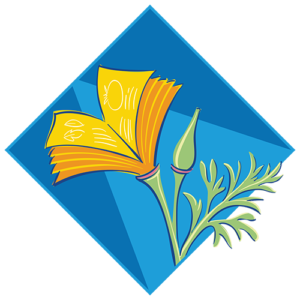By Peyton Ellas, Tulare/Kings Counties Master Gardener.
Is it spring yet? Many days in February feel like spring. But we still might get frost. Fog, rain, snow and even hail are not out of the picture. It’s a transition month. Enjoy it; summer will arrive soon enough. There’s plenty to do in the garden this month!
Planting: You can transplant most trees, perennials, spring-blooming bulbs and summer flower annuals this month. Plant so that the center of the plant is an inch above the soil level and use a three-inch layer of mulch. Clippings, including leaves and small twigs from your own garden, or even straw, works if you don’t have ready access to wood chips. Shred up large leaves like sycamore so rain can reach the soil. Keep mulch a few inches away from tree trunks and the base of roses and other woody shrubs.
In the vegetable garden, it’s time to plant asparagus, chives, cilantro, leek, green onion, parsley, potatoes, English peas, radish, spinach, kale, strawberry. You can also transplant cauliflower, cabbage, broccoli, Brussels sprouts and beet seedlings. You still have time to start from seed: onions (for setting out in April), tomato, peppers, basil, eggplant, tomatillo. Set out dahlia, gladiolus, lily and canna. Sow California poppy and other wildflower seed if you can keep the area weed free and watered for a few months.
Maintaining: Check your irrigation and make needed repairs for both sprinkler and drip systems.
Pruning can still be done on berries, grapes, deciduous fruit trees and roses. Do not prune camellias, forsythia, Eastern lilac, California lilac, California native sage, coyote mint, penstemon, quince and other spring-flowering shrubs or trees until they finish blooming. If you have plants that show signs of frost damage, wait until it’s warmer to prune the brown stuff off to protect the crown and roots. After pruning fruit trees, apply a dormant spray before the buds swell but when the air temperatures are at least 45°F. Products containing copper are used to control some diseases, like peach leaf curl. Products containing oil kill insects and their eggs that over-winter in the cracks and crevices of the tree. Choose a calm day with no imminent rain in the forecast and follow the directions on the container exactly. If you haven’t had any pest issues, you don’t need to spray.
This is also a good month to prune ornamental grasses and ground covers like lantana, California fuchsia, and verbena.
Earwigs and mollusks become active this month. Opaque bottles placed sideways in the garden bed, small tins with oil or stale beer, or rolled newspapers or cardboard tubes can all be traps. Check them each morning and drop insects in a bucket of soapy water. If you use plant-based soap, you can pour into the compost bin and repeat. It’s very effective. The chemical control for slugs and snails is iron phosphate, which is not toxic to pets, beneficial insects, and people. As always, follow the package instructions.
Weeds give us an ever-ready garden therapy opportunity. Try to remove weeds before they set seeds. If you have a limited time, go for the worst invasives like non-native thistle and mallow and escaped ornamentals like large leaf vinca.
Pick up fallen camellia blossoms and discard to prevent flower bud infection, which leaves ugly brown blotches on the blossoms. At the end of the month, fertilize deciduous fruit trees. Do not fertilize citrus or avocados yet.
As temperatures warm, watch for early signs of fire blight. Trees and shrubs in the rose and apple family are especially susceptible. It is a fungal disease most active as daytime temperatures rise to the high 70s Fahrenheit. Very early signs are tan or black sap oozing from dead bark when trees start actively growing. Later, blossom and fruit tips die back and look scorched, thus the name. The best control is to prune out diseased branches. Cut back the dead or dying branches well beyond reddish or brown streaks or patches that appear under the bark in affected wood. Fire blight is hard to eliminate but most trees can survive minor infections. Avoid over watering or fertilizing affected trees because rapid vigorous growth often increases the infection. Although the disease can reduce fruit production, it is not harmful to humans and harvested fruits are safe to eat. Continue to monitor and prune affected branches as signs appear. You can safely fertilize after blossom drop occurs.


Comments are closed.